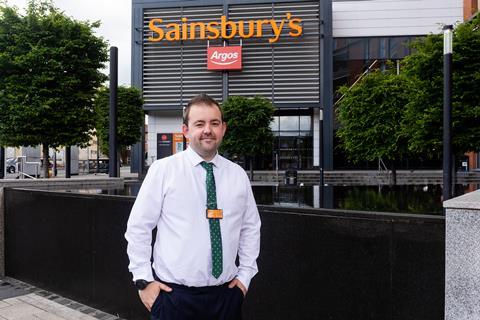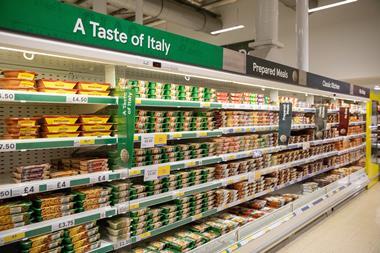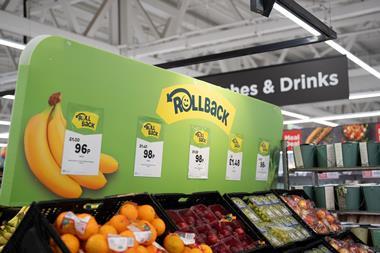
Duty manager: Jamie Gardiner
Store: Sainsbury’s Sutton
Opened: 2016
Size: 48,237 sq ft
Market share: 9.7%
Population: 957,262
Grocery spend: £25,770,055.25
Spend by household: £68.97
Competitors: 194
Nearest rivals: Aldi 2.9 miles, Asda 0.1 miles, Co-op 1.2 miles, Iceland 2.0 miles, Lidl 0.1 miles, M&S 0.3 miles, Morrisons 0.5 miles, Sainsbury’s 1.1 miles, Tesco 0.5 miles, Waitrose 1.1 miles
Source: CACI. For more info visit www.caci.co.uk/contact. Notes: Shopper profiling is measured using Grocery Acorn shopper segmentation. Store catchment data (market share, population, expenditure, spend by household, competition) is within a five-mile radius. For CACI’s shopper segmentation of the other stores we visited this week see the online report at www.thegrocer.co.uk/stores/the-grocer-33
How long have you worked for Sainsbury’s? I started as a 16-year-old part-time. I decided to take a gap year before I went to university – during that time my manager came to me with an opportunity to join the management trainee scheme. Like most people, I caught the retail bug, and I’ve been at Sainsbury’s 17 years now. I’ve worked my way up through stores, including in project management at head office and within HR as well. I’ve been at this store since August 2023.
Tell us a bit about the store. Compared to some other retailers this is a relatively new shop, so it’s open and light and is a nice store to work in. We currently have around 230 colleagues across the night shift, day shift and online operation, including a 16-strong management team. Our customer flow is predominantly local residents coming in for their weekly shop. We also rely heavily on high street footfall, with people coming into store for one or two items, which means our demographic is quite mixed.
Staff interaction with our shopper was overwhelmingly positive. What drives that? It starts with our colleagues – it’s testament to my team. Then it’s about constant communication. Quite often in retail it’s easy to get overrun with the day-to-day and forget about the vision. The second point is about operational excellence, in that everyone is trained to do the job. It sounds quite basic, but actually the basics are the most important. We say “hi” and “bye” with a smile. We make sure we follow every single process and that every colleague is trained.
When was the last investment in the store? The most recent was the implementation of HFSS laws, when we took out the promotional ends. With us being a fairly new shop, we’ve got a lot of the up-to-date fixtures. So we haven’t had any major investment. It helps that we’ve got wide aisles, which leads to less damage to fixtures from trolleys.
Three Nectar Price discounts were not signposted. Is keeping up a challenge? In terms of workload, promotional changes have always been there. It’s always been quite fluid and regular in order to give customers a broad range. I don’t think it’s added any extra workload in stores as a result of Nectar Prices, it’s just more of a different approach, and customers have received it well.
How much has the introduction of Nectar Prices changed things? With any strategy change it is going to feel different, depending on the goal. The strapline is that we want to make ‘good food affordable for everyone’. Through the proposition of Low Everyday Prices, Aldi Price Match and Nectar Prices, we’re ensuring that. It’s been a great success and the feedback I’ve heard from customers has been positive.
What’s your immediate focus as a store? It’s back to school next week, which returns some normality after the bank holiday. Trade tends to dip in London as we go into summer because people leave to go on holiday. That gives us an opportunity to work on everything we’re doing and make it better. Whether that’s training, service or availability, it gives us a chance to set up our stool for the golden quarter. All of course without taking our eye off what will hopefully be a summer of great weather.



















No comments yet